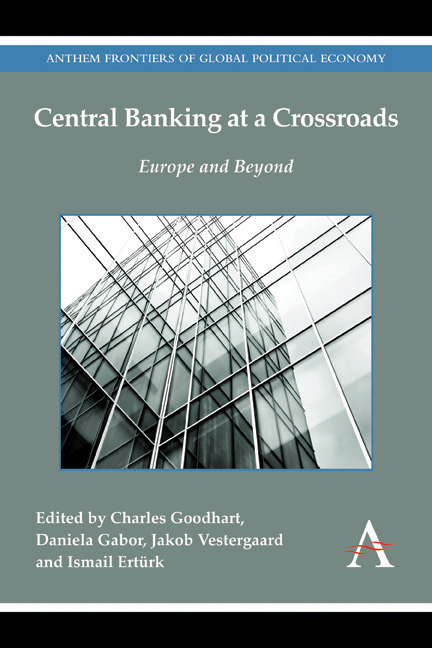Preface
Published online by Cambridge University Press: 05 December 2015
Summary
This book has its origin in a conference held in the Axelborg Hall in Copenhagen last year. Axelborg Hall, built in 1920, was the second largest secular building in Copenhagen at the time, surpassed only by Parliament. The Danish Cooperative Bank, for which Axelborg was originally built, went bankrupt in 1925, only five years later. But the building itself survived and now boasts a colorful history of nearly one hundred years of different owners and tenants, with banking by far the dominant theme. It seemed the perfect venue for a conference on central banking at a crossroads.
However, as esteemed speakers and eager participants arrived to the venue on the morning of 29 January last year, Axelborg Hall lay shrouded in darkness, as did indeed the entire building and a few blocks around it. Helped only by the dim light of a few candles, Professor Charles Goodhart delivered his opening talk masterfully to an audience of several hundred, most of whom could perhaps hear but not see much. Halfway through Goodhart's talk, the lights came back on. And from there, it was smooth sailing.
A generous reading of post-crisis central banking would say that an exceptionally difficult situation was handled just as masterfully. Out of a dark and dangerous event, came a stronger mode of central banking, reinvented and with new resilience. Others will say that in the world of central banking, darkness is still the order of the day, as we chase systemic risk and try to tame phenomena of which we still have only insufficient understanding.
The contributions in this book fall between these two poles, perhaps with a slight bias towards a worried take on the trajectory of central banking in recent years. While a certain measure of concern may be shared by all contributors, the approaches taken and conclusions reached by different authors vary considerably. This was a defining feature of the talks given at the conference too, in which many (but not all) of the chapters originate.
- Type
- Chapter
- Information
- Central Banking at a CrossroadsEurope and Beyond, pp. vii - viiiPublisher: Anthem PressPrint publication year: 2014



